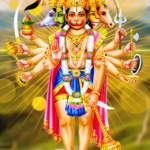India, known for its rich tapestry of culture and traditions, celebrates a myriad of festivals throughout the year. Each festival carries its own unique significance and customs. Among these, Dussehra stands as one of the most prominent and celebrated festivals in the country. But why do millions of Indians observe this festival with great enthusiasm and devotion? To answer this question, we need to delve into the origins, history, and customs of Dussehra kyon Manaya Jata Hai.
Historical Roots
Dussehra kyon Manaya Jata Hai also known as Vijayadashami, marks the victory of good over evil. The festival is celebrated on the tenth day of the lunar month of Ashwin, which typically falls in September or October. Its significance can be traced back to various myths and historical events.
One of the most famous tales associated with Dussehra is the epic Ramayana, which recounts Lord Rama’s victory over the demon king Ravana. This event is celebrated with great fervor in the northern parts of India, particularly in the states of Uttar Pradesh and Madhya Pradesh. Effigies of Ravana, his brothers, and his ten-headed demon form are set ablaze during the festivities, symbolizing the triumph of righteousness over wickedness.
In the eastern part of the country, especially in West Bengal, Dussehra coincides with the conclusion of Durga Puja, a celebration of the goddess Durga’s victory over the buffalo demon Mahishasura. The festival is marked by the immersion of elaborately crafted idols of the goddess into rivers or bodies of water. This ritual symbolizes the return of the divine to their celestial abode.
Religious Significance
Dussehra is a multifaceted festival that holds various religious connotations depending on regional and cultural beliefs. In addition to the Ramayana and Durga Puja, it is also associated with the worship of various deities such as Goddess Saraswati and Lord Rama. People seek blessings from these deities for wisdom, knowledge, and victory over ignorance and evil.
In the southern states of India, particularly Karnataka, Andhra Pradesh, and Tamil Nadu, Dussehra is celebrated as a symbol of the victory of Goddess Chamundeshwari over the demon Mahishasura. In Mysore, the Mysore Dasara festival is a grand and royal celebration featuring a grand procession of adorned elephants, music, and cultural events.
Cultural Celebrations
Apart from its religious significance, Dussehra also boasts rich cultural elements. Folk dances, music, and art play a crucial role in the festivities. Ramlila, a dramatic reenactment of episodes from the Ramayana, is performed in various parts of the country. These performances are not only entertaining but also serve as a medium for passing down the tales of these ancient legends to future generations.
The colorful and artistic Rangoli patterns are another highlight of Dussehra celebrations. Homes and streets are adorned with these intricate designs made of colored powders, flowers, and other materials. The vibrant decorations add to the festive atmosphere and create a sense of unity within communities.
Symbolism and Customs
Dussehra carries various symbols and customs that are meant to teach valuable lessons. The burning of effigies, for instance, signifies the destruction of evil and the victory of good. It encourages people to reflect on their actions and strive for righteousness.
The act of exchanging gifts during Dussehra is a way of strengthening bonds and fostering love and goodwill among friends and family. Additionally, many people clean and decorate their homes during this time, signifying the importance of cleanliness and order in one’s life.
Dussehra kyon Manaya Jata Hai
Dussehra is more than just a religious festival; it is a celebration of India’s diverse cultural tapestry and a reminder of the age-old battle between good and evil. The festival’s customs, rituals, and historical significance have evolved over time, adapting to the regional beliefs and practices of different communities.
As India continues to change and grow, Dussehra kyon Manaya Jata Hai remains a constant, serving as a cultural anchor that connects people to their heritage and unites them in the spirit of righteousness. This vibrant festival encapsulates the heart of India’s rich traditions and is a testament to the enduring power of good over evil, making it a cherished and beloved occasion for millions across the country.







